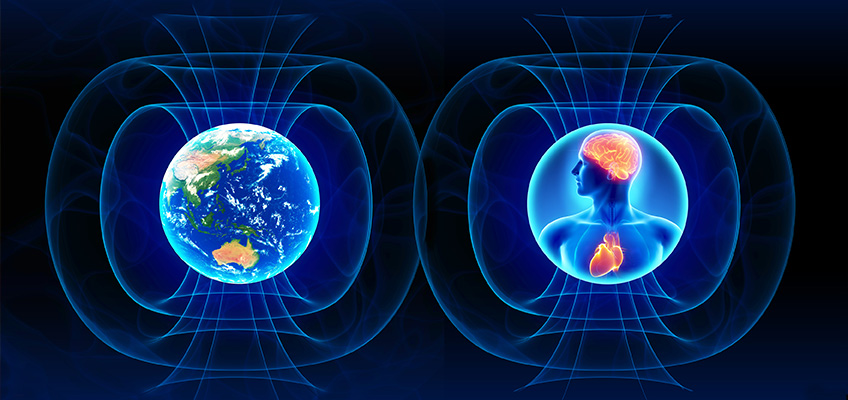
It is one of the most talked about human physiological processes today – at research centers like the HeartMath Institute, in hospitals and science labs, and in the offices of educators, corporate leaders and sports managers. It has cropped up in professional journals, popular magazines and doctoral dissertations, and is frequently a featured topic in panel discussions, conferences and soon to be, perhaps, water-cooler conversation.
Coherence itself is not new. Human beings have always been able to achieve it – under the right conditions. It is our understanding of coherence that is relatively new, the result of recent investigations into its properties and benefits and how we can increase it.
HMI Director of Research Dr. Rollin McCraty and the institute’s founder, Doc Childre, have devoted many years to furthering our understanding and awareness of coherence. Now they have collaborated on a comprehensive overview and analysis of what we know about this critical process in an article for the journal, Alternative Therapies in Health and Medicine. (Use the link at the end of this article to view McCraty and Childre’s complete article, titled Coherence: Bridging Personal, Social, and Global Health.)
“Coherence implies order, structure, harmony – and alignment within and amongst systems – whether in atoms, organisms, social groups, planets or galaxies,” McCraty and Childre explain in their article, which appeared in Alternative Therapies’ July/August issue. “This harmonious order signifies a coherent system whose efficient or optimal function is directly related to the ease and flow in life processes. By contrast, an erratic, discordant pattern of activity denotes an incoherent system whose function reflects stress and inefficient utilization of energy in life processes.”
On an individual level, the article notes, researchers have observed in laboratory and natural settings that people experiencing a high level of coherence exhibit “a general sense of well-being and improvements in cognitive, social and physical performance.”
Although people are able to achieve and increase their coherence in a variety of ways – breathing exercises, compassion-focused meditation and listening to uplifting music among others – studies at the HeartMath Institute and elsewhere have shown one of the quickest and most effective ways is through our emotions, specifically positive emotions, both spontaneous and self-generated.
“We have found that positive emotions such as appreciation and compassion, as opposed to negative emotions such as anxiety, anger and fear, are reflected in a heart-rhythm pattern that is more coherent,” the article explains.
Repeated tests have shown that individuals who intentionally experienced such positive emotions were able to raise their coherence levels and enjoy a wide range of benefits, including decreases in high blood pressure, improved academic performance, greater efficiency in the workplace, stronger and more meaningful relationships and much more.
Researchers today can assess an individual’s coherence level by monitoring his or her heart-rate variability (HRV) – the beat-to-beat changes in heart rate. Utilization of HRV as a training tool has gained wide acceptance.
“This variability within an organism’s key regulatory systems is critical to the inherent flexibility and adaptability or resilience that epitomizes healthy coherent function and well-being,” the authors state.
Researchers have found that the combination of HRV analysis and HeartMath’s self-regulation techniques and the coherence-building technology of the emWave2® (Personal Stress Reliever) or the emWave® Pro (Desktop for PC and Mac) has proved to be a highly successful alternative companion therapy for reducing stress and many debilitating conditions. Such as anxiety, anger, hypertension, immune-system problems, diabetes, post-traumatic stress disorder, chronic pain, fatigue and burnout.
Analyzing heart-rate variability, say McCraty and Childre, provides a glimpse into the complex interactions of the heart with a number of the body’s systems. When HRV is deemed to be incoherent, a host of interventions can be employed to achieve more optimum levels and increase coherence.
Minute particles and entire galaxies – function best as a whole when their parts are coherent – orderly, structured, harmonious and aligned – creating a state athletes and others who must perform at intense levels call being in the zone.
So, whereas a single bodily system depends on the many processes that comprise it, and the well-being of the entire body depends on the integrity and proper functioning of the multitude of systems throughout the body, the same holds true at any level of existence.
This notion of the interconnectedness of all things, whether it is an atom, living being, planet, corporate organization or country, say McCraty and Childre, is one of the most profound perspectives to emerge in the last century.
“Thus, every whole has a relationship with and is a part of a greater whole, which is again part of something greater. In this context, nothing can be considered as separate, alone or lacking relationships.”
The scientific analysis and perspectives presented in McCraty and Childre’s Alternative Therapies article offers the researcher, health professional, educator or layperson the opportunity to learn about a rich body of science that has accumulated largely in the last half century.
The actual article, Coherence: Bridging Personal, Social and Global Health which you may read in its entirety on the HeartMath Institute’s Web site, discusses many more topics than those mentioned here. These include resilience and the importance of accumulating it; heart-brain interactions; social and global coherence, the heart brain; the coupling of the heart’s energy field with information outside the human body; and the hypothesis of the Global Coherence Initiative that large numbers of people intentionally generating positive emotions from a heart-coherent state can modulate the earth’s energetic and geomagnetic fields and ultimately increase global coherence.

